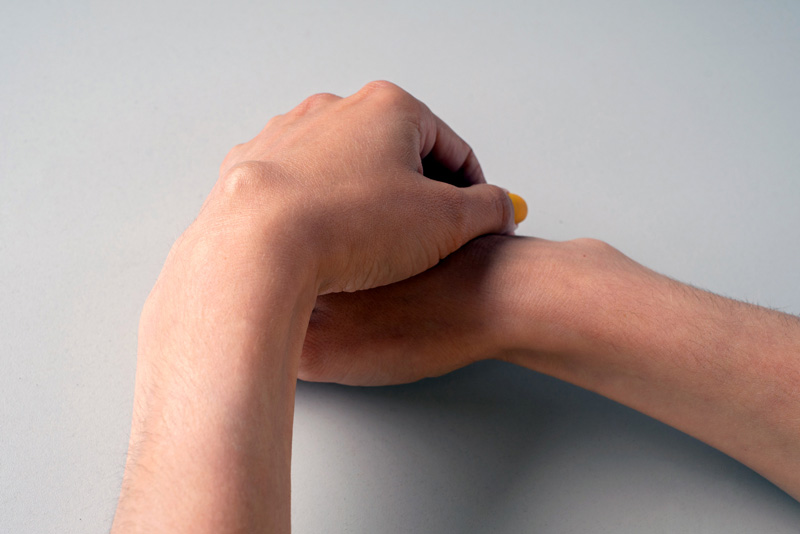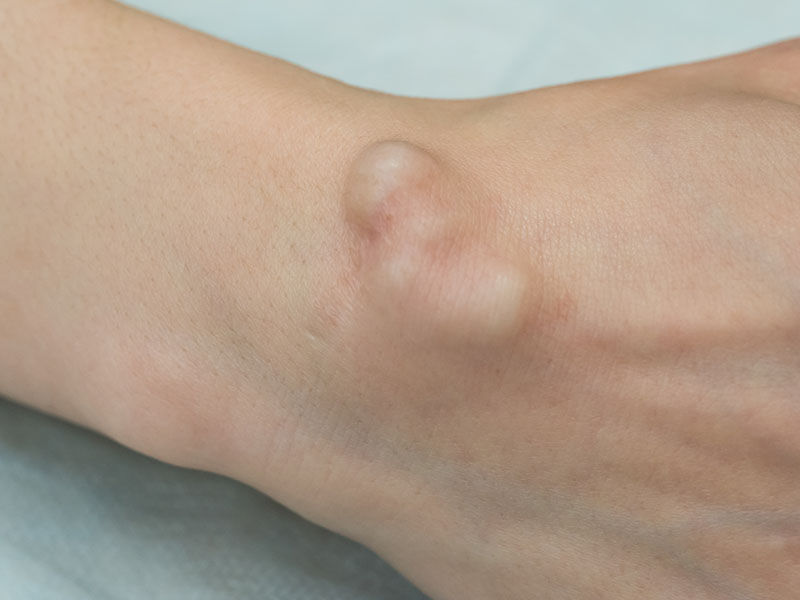Cysts are abnormal sacs in the body that are filled with fluid or semisolid material. The look like small lumps, often red or off-white in colour. They can form on the skin, mucus membranes (i.e. the inner linings of some organs and cavities such as the nose, mouth or stomach), or inside organs. Cysts can have various causes and symptoms depending on their type and location. Some cysts are harmless and do not need treatment, while others may cause pain, infection, or complications. Here are some common questions and answers about cysts.
What are the causes of cysts?
Cysts can be caused by different factors, such as:
How common are cysts?
Cysts are very common and can affect anyone at any age. Common locations include wrist, foot and ankle, arms and leg and the back.
Some types of cysts are more prevalent in certain groups of people, such as:
Is a cyst something to worry about?
Most cysts are benign or noncancerous and do not pose a serious threat to your health. However, some cysts may cause problems if they:
Should cysts be removed?
Cysts do not always need to be removed if they are not causing any symptoms or complications. However, removal may be recommended if you have:
How are cysts removed?
Cysts can be removed by different methods depending on their type, size, location, and condition. Some of the common methods are:
Getting treatment for cysts from the Manchester Lumps Clinic
You can ask your GP for a referral to the Manchester Lumps Clinic, or book an appointment with us directly.
Diagnosing a cyst typically involves a combination of medical history, physical examination, and, in some cases, imaging studies.
Here’s an overview of the diagnostic process:
- Your doctor will ask about your symptoms, how long you’ve had them, and any relevant medical history.
- A clinical examination will be performed to assess the size, shape, and consistency of the lump or affected area.
- Depending on the suspected location of the cyst, we might recommend imaging studies such as ultrasound, or MRI to get a clearer view of the cyst and its surrounding tissues.
- In some cases, a biopsy may be performed to extract a sample of tissue from the cyst for further analysis. This can help determine if the cyst is benign (harmless) or malignant (cancerous).
- Once diagnosed, the appropriate treatment plan can be determined based on the type, size, and location of the cyst, and usually surgical excision is advised if it cannot be treated with aspiration and or steroid injection.
As mentioned above, cysts can often be harmless. But it’s important to seek professional advice to determine if a cyst is actually a cyst or something more serious. If you have a cyst-like lump and you’d like a professional assessment, contact the Manchester Lumps Clinic for advice.
Useful links:


